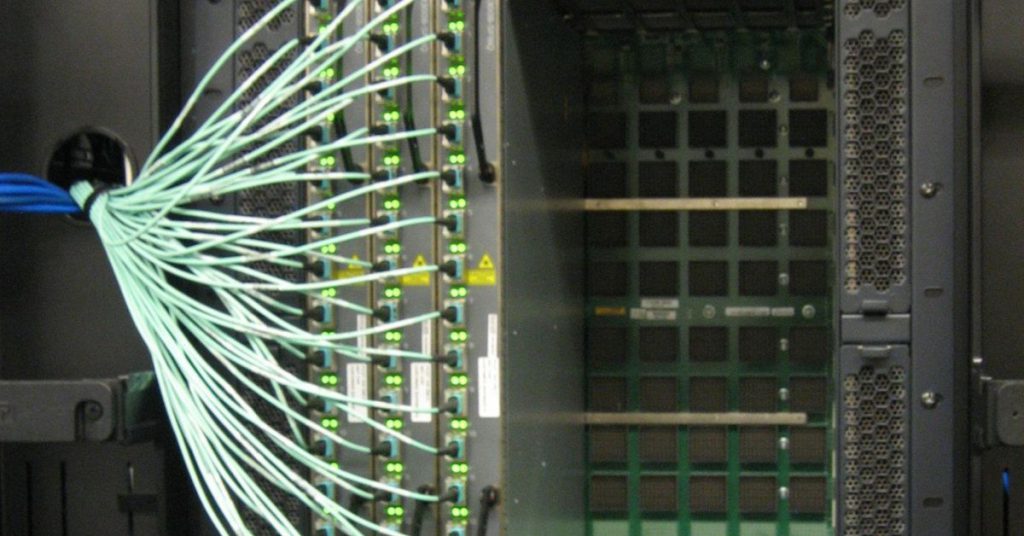[This is a sponsored article with Juniper Networks.]
In a digital era where purchasing food from a hawker can be as easy as scanning a QR code with a phone, Payments Network Malaysia (PayNet) is often the driving force behind this seamless cashless experience in Malaysia.
For context, PayNet operates Malaysia’s payments network and serves as the central backbone for financial markets.
After the pandemic, the financial institution transitioned to hybrid work, reimagining its Kuala Lumpur headquarters and operations centre to be a more collaborative and flexible workplace.

Similarly, James Cook University (JCU) Singapore wanted to continue offering its students the flexibility to choose where they learn, whether online or through in-person classes.
What do these institutions have in common?
They wanted to up their networking game, both on and off-campus to give their stakeholders a better digital experience.
So, they turned to Juniper Networks (Juniper), a US-based company with a US$11.83 billion net worth offering software and network technology, for an AI-native networking solution.
But, what’s the problem with WiFi?
Back in the 2000s when WiFi became popular, most networks were designed for basic tasks like letting users connect to the internet. As more people started using personal devices like smartphones and laptops, the demands on these networks increased significantly.
It’s like how a small road designed for motorcycles suddenly had to handle lots of cars and trucks, causing traffic jams and delays.
“We live in a world where every connection counts, and it’s not just about connectivity, but the experience of a great connection,” Yedu Siddalingappa, Juniper’s AI-Native Enterprise Tech Lead Specialist elaborated.
“Imagine a large retail distribution centre, a school network, or a hospital facing a network outage even for a few minutes. It would result in millions of dollars of lost revenue, students unable to take tests, or healthcare workers unable to access life-saving information.”

As institutes try to improve their network systems, the IT servicing team has to deal with numerous different software and services that don’t always work well together.
And it takes a lot of time and effort to manually sort through everything and figure out what’s causing problems.
Studies show that more than half of the people who manage networks spend over 20 hours each week just fixing issues, and almost a quarter of that time is spent trying to find out what’s causing the main problems. It leaves them with little time and headspace to innovate and design a better solution.
That’s where AI-native infrastructure comes in.
How AI fixes the issue
With the AI-Native Networking Platform by Juniper, the network can smartly break traffic flows and redirect them to other “roads”, thus spreading the network’s load to accommodate more demands.
It’s called the Juniper Networks Enterprise Wired and Wireless LAN Infrastructure solution, where Juniper is named a 4x Leader in the Gartner® Magic Quadrant for Enterprise Wired and Wireless LAN Infrastructure.
Among its features includes Mist AI, which combines AI, machine learning, and data science to help online platforms seamlessly communicate with the network and each other, and to redirect traffic flow to reduce lags in the system.
“From real-time fault isolation to proactive anomaly detection and self-driving corrective actions, Juniper’s AI-Native Networking Platform furnishes campus, branch, data centre, and WAN operations with next-level predictability, reliability, and security,” added Yedu.
When it works as intended in the improved WiFi network at PayNet and JCU Singapore, its users should get fast, secure, and stable internet access everywhere at their respective headquarters and campus with little to no disruptions.
In addition, Juniper’s Mist AI comes with cloud-based management, which allows for centralised control, rapid deployment, and easy scalability.
This cloud-based system lets its users manage everything from the cloud with ease. This means that they can control and access all materials across online platforms that are constantly updated in the background with few bug issues.
When these systems work together at PayNet, the 500-person team can enjoy continuously optimised connectivity for laptops, printers, smart TVs, security cameras, and other IoT devices.
Guest WiFi has also been transformed from a tedious manual activity to a secure, automated process.

The technology can also make things more efficient.
For instance, Juniper’s Mist AI has a feature called Marvis, the Virtual Network Assistance (VNA) which acts like a smart helper for network engineers.
Instead of engineers having to figure out problems on their own, Marvis swiftly identifies and resolves issues remotely, eliminating the need for troubleshooting manually. This can save costs for institutions in the long run.
Moreover, Marvis’ efficient problem-solving capabilities can contribute to an organisation’s sustainability efforts. By resolving issues remotely, it results in an 85% reduction in travel for IT teams, aligning seamlessly with sustainable business practices and minimising environmental impact.
Ultimately, Juniper’s AI-Native Networking solution can help universities address issues with WiFi reliability and provide users with a secure and user-friendly network, making operations smoother.
As a result, Juniper’s solution allowed JCU Singapore to host a six-fold increase in connected devices, totalling to roughly 25,000 devices.
PayNet’s staff on the other hand, now have a better digital experience in the office. It has allowed them to stay focused on mobile payment innovation, and on maintaining the reliability, security, and scalability of Malaysia’s financial infrastructure.
Continuous innovations to foster growth
Of course, the requirements of financial and higher educational institutions will continue to evolve as time goes by, and Juniper networks provide adaptable solutions to enable growth.
For example, Juniper has recently added its new Marvis Minis to its AI-Native Networking Platform. It’s said to be the industry’s first and only AI-Native Networking Digital Experience Twin.
Put simply, Marvis Minis can mimic users on the network to understand how it’s set up, like a detective gathering clues without needing someone to show them around.
By doing this, it can spot problems early on, working alongside Mist AI to ensure everything runs smoothly, like a helpful team making sure the roads are clear before you start your trip, so you don’t get stuck in traffic.
The tool constantly learns as it ingests more data, using its growing knowledge base to proactively correct issues in real time.
Marvis Minis are capable of transforming how IT teams interact with enterprise networks across wireless access, wired access, and SD-WAN domains, thus making them an essential tool for IT teams.
Get tailored AI solutions
Every company has distinct network needs and would require a solution that can be tailored to seamlessly integrate with their existing infrastructure.
That said, implementing an AI-native network requires careful consideration and planning.
Companies can start by identifying the specific challenges they aim to address within their network infrastructure and by envisioning the capabilities they will require down the road.

“Most businesses understand the importance of networking, but not many are aware of the solutions available today to achieve their desired outcomes,” noted Yedu.
In this regard, Juniper aims to spread global awareness through events, webinars, training, and certification programmes.
Juniper’s upcoming AI-Native NOW, Live in Singapore event is a step in that direction.
“The event is primarily educational, and intends to share how AI can streamline networking operations and deliver the best user experiences, he shared.
IT industry professionals who want to learn more can do so by signing up your interest for Juniper’s AI-Native NOW, Live in Singapore, on May 9, 2024.
Registrations are subject to the organiser’s approval, which will be confirmed via the email you’ve registered with.
- Sign up for Juniper Networks’ AI-Native NOW, Live in Singapore event here.
- Read about other AI-related topics we’ve written here.
Featured Image Credit: Payments Network Malaysia / Juniper Networks









